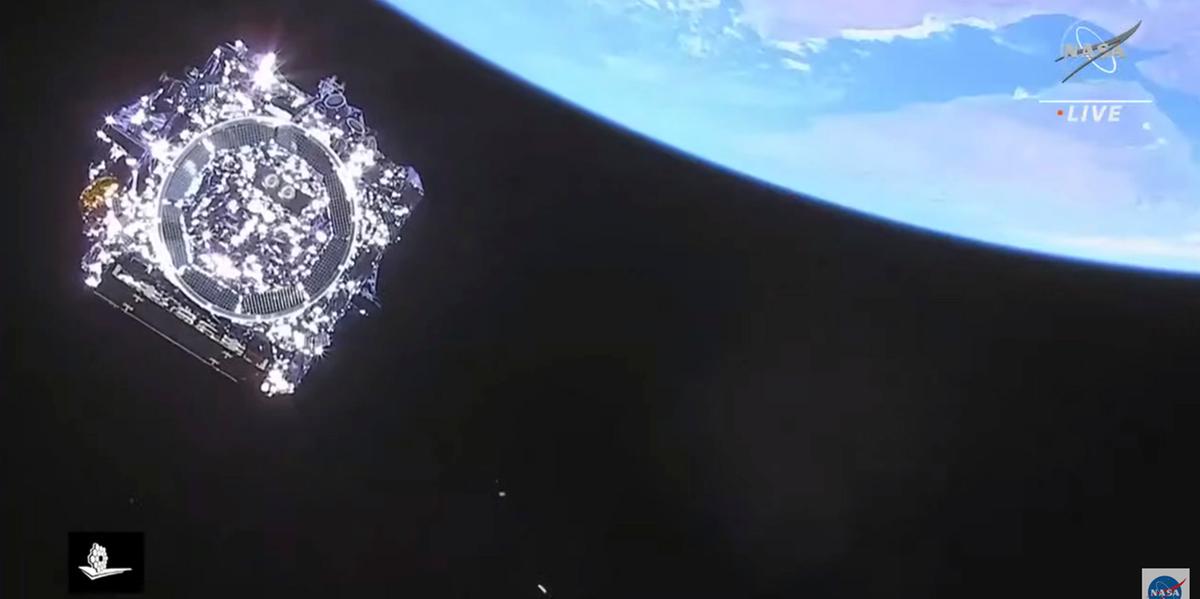The James Webb Telescope is the long-awaited successor to the Hubble Telescope.
It was postponed until Christmas last year, for example, and it has already been used to detect traces of carbon dioxide in the atmosphere of a planet outside our solar system and “to catch light from the first stars and galaxies that formed after the Big Bang. “13 billion years ago.
Competition to use the space telescope is fierce, but on Friday afternoon it will — among others, on the order of Per Bjerkeli of Chalmers in Gothenburg — aim for 5.3 hours at the young star system TMC 1a, 450 light-years from Earth. .
– We applied for time a year ago and we got it despite the competition, Per Bjerkeli tells TT.
– After that, the telescope was raised and calibrated, and now it was time. It’s a good feeling when you go home from work and know that “it’s happening now.”
The whole puzzle
Currently active in Taiwan, the USA, Denmark and Poland, Sweden and his research colleagues have been looking at the star system TMC1A since 2016. The system is young, only about 100,000 years old, and hopefully can provide our new answers. Formed its own solar system.
They previously used the Alma radio telescope in Chile. But the opportunity to direct James Webb to the Taurus constellation and study TMC1A will yield a large amount of new information, according to Per Bjerkeli.
– It’s a young solar system that’s just forming, not like ours. The problem with ALMA is that, even with slightly better sharpness, we can only see really cold gas, he says.
– With James Webb, we also see hot gas. It’s hot near the star, and we need all the wavelengths to put the puzzle together.
Anxious waiting
Using the space telescope, researchers hope to get a clearer picture of how far planet formation has progressed in TMC 1a.
After Friday’s 5.3 hours, it will take several days to send data from the telescope back to Earth and scientists. Hopefully it will ring in the mailbox this weekend.
– Best case scenario, we will get data from Sunday itself and good data very quickly. So I will probably not only monitor emails, but will definitely sit down and update the website, says Per Bjerkeli.

One of the first images from the James Webb Telescope this summer, the galaxy cluster SMACS 0723. File image. Image: NASA/AP/TT
The James Webb Telescope is the successor to the successful Hubble Telescope.
Launched from the Kourou space base in French Guiana on Christmas Day 2021, it reached its destination in solar system orbit a month later, and then began opening the mirrors.
The telescope is in orbit 1.5 million kilometers from Earth.
The main mirror of the telescope has a diameter of 6.5 meters (Hubble 2.4 meters) and a focal length (focal length) of 131.4 meters. It has a total exposure area of 25.4 square meters. In total, its weight is 6.5 tons.
It provides incredibly detailed resolution where you can observe objects the size of a coin four miles away.
The goal is to distinguish light from the first galaxies formed in the Universe and provide a more detailed picture of them, contributing to the understanding of how galaxies evolve, how stars are born and die, and how planets form. systems arise. One hopes for new discoveries about Earth’s so-called exoplanets and expansion on the origins of life.
The European Space Agency ESA, the US ditto NASA and Canada’s CSA are collaborating on the space telescope. The telescope’s imaging camera and spectrograph were developed in part by researchers at Stockholm University, Chalmers and the Swedish company Spectrogon.
The plane also has an antenna system developed by Ruag Space in Gothenburg to transmit data back to Earth.
The telescope is named after James E. Webb, head of NASA when the Apollo program was built in the 1960s.
Source: NASA

Prone to fits of apathy. Unable to type with boxing gloves on. Internet advocate. Avid travel enthusiast. Entrepreneur. Music expert.



